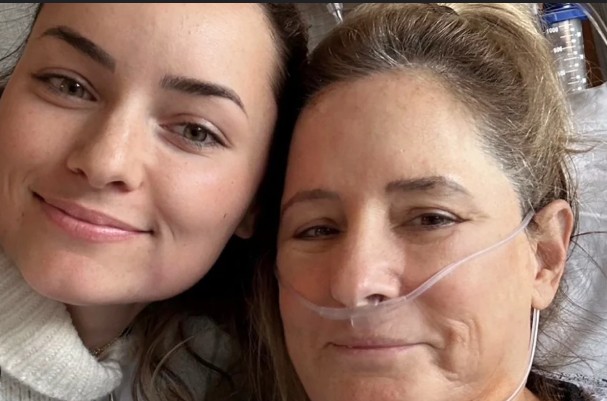In medical emergencies, every second counts. Recognizing the signs of a stroke and acting swiftly can mean the difference between life and death. This truth was illustrated in a recent news story involving a woman whose quick instincts saved her mother’s life during a stroke. Their story not only highlights the importance of awareness but also serves as a powerful reminder that immediate attention can significantly alter the course of such medical emergencies.
Recognizing the Signs of a Stroke
Strokes often strike without warning, making early detection crucial for effective treatment. Understanding the symptoms can empower individuals to act quickly. Some common signs include:
- Sudden numbness or weakness in the face, arm, or leg, especially on one side of the body.
- Confusion or trouble speaking and understanding speech.
- Vision problems in one or both eyes.
- Difficulty walking, dizziness, or loss of balance.
- Severe headache with no known cause.
In this case, the daughter recognized these critical warning signs immediately and knew how urgent the situation was. Her attentiveness and knowledge were key factors in her mother’s swift recovery.
The Power of Swift Action
When the daughter noticed her mother’s symptoms, she didn’t delay. Her quick reaction underscores the importance of not hesitating in these situations. After identifying the telltale signs of a stroke, she promptly called emergency services, ensuring her mother received the urgent care she required. Her decisive action and understanding of the severity of the circumstances played an instrumental role in her mother’s survival and recovery.
The Role of Emergency Services
Upon arrival, emergency responders took over, providing critical care that only trained professionals can offer. They have the tools and training to assess and stabilize stroke victims rapidly. Quick transportation to the hospital allowed doctors to administer the necessary treatment to limit any potential damage. The story exemplifies how a seamless handover from family to professionals can make all the difference in medical outcomes.
Importance of Stroke Knowledge and Training
Knowledge is a powerful tool, especially for medical emergencies. Understanding stroke symptoms and the urgency of the situation can maximize the chances of a positive outcome. Here are some important steps for handling such situations:
- Educate yourself and loved ones about stroke symptoms.
- Practice how to respond quickly and effectively by role-playing potential scenarios.
- Ensure easy access to emergency contact numbers and medical information.
- Consider CPR and first aid training to increase preparedness for various emergencies.
The daughter’s familiarity with stroke symptoms and her prompt response were critical in changing the trajectory of her mother’s medical emergency.
The Impact of Parental Bonds
This story isn’t just about recognizing the warning signs of a stroke. It’s also about the profound bond between parent and child. The daughter’s instinctual response highlights the deep connection and unwavering care that defines many family relationships. Whether in moments of joy or crisis, such bonds inspire us to remain vigilant and supportive of our loved ones.
The Medical Perspective
Upon reaching the hospital, the medical team quickly assessed the situation. They undoubtedly utilized imaging tests like CT scans to determine the type and severity of the stroke. With immediate care, they can administer treatments, such as clot-busting drugs for ischemic strokes, which are effective if given promptly after the onset of symptoms.
Delayed responses in stroke cases can lead to severe repercussions, including long-term disability or even death. The combination of the daughter’s timely intervention and the hospital staff’s expertise showcases a collaborative effort that was essential for the mother’s successful recovery.
Long-term Care and Rehabilitation
Recovering from a stroke doesn’t just end with hospital discharge. Long-term care and rehabilitation are vital components of the journey back to health. The mother’s story continues with her rehabilitation process. Activities may include:
- Physical therapy to regain muscle strength and coordination.
- Speech therapy for those who have experienced speech or language difficulties.
- Occupational therapy to assist in reclaiming everyday skills.
- Support networks through family or groups for emotional and psychological well-being.
Recovery times can vary, with some patients seeing significant improvements in weeks, while others might require months or years of consistent effort.
The Broader Implications
The daughter’s quick response not only saved her mother’s life but also highlighted a broader societal issue—awareness and education around strokes remain essential in improving emergency outcomes.
Advocacy for widespread education on the signs of stroke can empower communities and save lives. Schools, workplaces, and local organizations could implement regular workshops or seminars focused on understanding medical emergencies and effective responses.
A Lifesaving Reminder
This moving story serves as a poignant reminder of how invaluable quick thinking and knowledge are in emergencies. The courageous and immediate actions of a daughter illustrate not only her resolve but also the possibility of a better outcome through informed awareness and decisive action. By learning from their experience, we are better equipped to act should a similar situation arise, ensuring that we too might save a life when every second matters.









